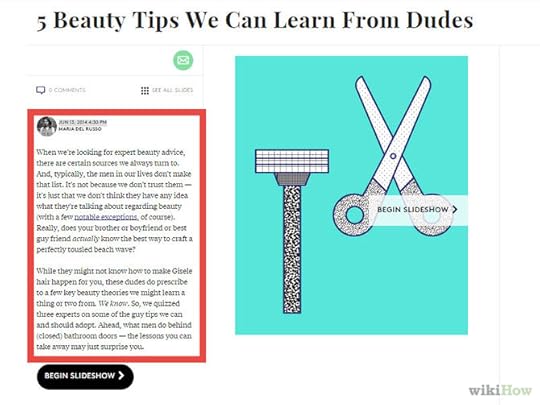Erik Qualman's Blog, page 505
November 12, 2015
5 Ways to Increase Your Social Care Efforts

Take a second and think back to the last great customer service you experienced. This could be in-person at a restaurant, online through twitter, or face to face from an employee handling a difficult situation.
How did it make you feel?
Did you tell someone about it? Even if you didn’t, I bet it was easy to remember how great you felt.
Now think of a bad customer service experience. Did it pop into your head even quicker than the good one and can you remember it that much more vividly?
I bet you most definitely told someone about it. Perhaps through a Facebook or Twitter post, right? I know I did last year when Budget rental truck failed to provide a moving truck after we reserved it two weeks prior and put down a deposit. After multiple phone calls my wife and I took to Twitter, Facebook, and Instagram. Luckily we got our moving truck (6 hours later), but it was because of our relentlessness and own problem-solving. Believe me, it had nothing to do with Budget’s leadership. #thanksbutnothanksbudget
As I shared at the #MACUHO2015 conference at Penn State in October, we are relying on social care and turn to platforms like Twitter, Facebook, and Instagram (yes Instagram, check out @birchbox) to share our problems and hopefully, have them resolved.
Sharing these bad experiences faster, more frequently, and with more people makes sense because according to American Express’s Global Customer Service survey, 42% of people will tell their friends about a good customer experience on social, while 53% will talk about a bad one.
That’s where social care comes into your organization’s leadership must-have’s starting now, not in 2016.
Kevin, what the heck is social care and why do I need to care about it?
By my definition, social care is:
1. the efforts employees/volunteers make through social media to care for customers.
2. a service provided by empowered and well-trained representatives, select groups, and leadership to provide positive customer experiences and engagement.
The key words in the definition are empowered, well-trained, and leadership. Social media in general isn’t just for the marketing department nor is it a bottom-up or top-down approach. In the words of good ole Hillary Clinton, “it takes a village.”
Whether you are the social media expert or the most removed person from your companies front-line, you have an impact.

If Timothy Sands, Virginia Tech’s President, is putting himself out there on Twitter from inviting students to join him and his wife for lunch in their student center to answering tweets helping solve IT and Residence Life issues then you most certainly have no excuse.
Still not convinced you play a role in social care because of your job title or responsibilities within your organization? Let’s look to Jimmy John’s who have an entire department (marketers to college grads to stay at home parents) offering some of the best customer service through social media I’ve come across. This mindset is a shift in leadership, culture, and requires buy-in from several key players. Jimmy John’s not only provides the best customer service but they do it with the right professional voice, personality, and accuracy. Sure, the answers may take time but they acknowledge fast (hence #freakyfast) and make sure they make the customer’s day in under 140 characters. From what I can tell, no tweet goes on answered, positive, negative, or in-different.
So, how do you “up” your social care (or maybe get started)? Here are five quick tips – a few we shared in my keynote “Social Care: The New Approach to Serving Students On Your Campus” at the MACUHO Regional Conference.
1. HIRE A SOCIAL CARE REP
Effective social care requires someone who can act fast, engage, represent your organization’s professional digital voice (while not being afraid to use an occasional gif or emjoi), and can have access to the entire organization. If you have an assistant running your front desk or a person answering the phones, then a social care rep is a must have. Young adults especially are making fewer and fewer phone calls (heck, we text with our grand-parents now).
2. CELEBRATE THE POSITIVE
So many of us think of the negative when we ask “what-if” questions. Yes, there will be some things you don’t like seeing but wouldn’t you rather have a pulse about how your department is perceived and educate, train, and create a culture that listens? I’m bullish on this topic, but when done right, but the upside of an effective social media strategy outweighs the what-if’s. By the way, you all work hard and care about what you do, it’s time to celebrate the success, tell the story, and see what your audience needs from you.
3. SHOW THE LOVE
Be a part of #Teamfollowback and if they are part of your audience (or affiliated to your industry), follow them back if they follow you. If your brand is big enough, don’t be afraid to start following (i.e. if you are college campus department such as Penn State, following relevant PSU students is ideal). But if they start to follow you, start to look at your instagram or twitter timeline to get a sense of what is going on in their lives, what gets them excited, and where they need help. Become the number one resource and the biggest “ears” on campus.
4. SEARCH
Twitter and Instagram search is powerful to get a pulse on your demographic as well as to see what people are saying about your service, program, or product. You may be waiting for @ tags or hashtags you have marketed, but guess what, fewer than 3% of customers directly @ mention brands. Start searching geotags of your facilities/locations on Instagram and come up with 10-15 keyword (not hashtag) searches to run on Twitter search or Tweetdeck.
5. CREATE AN AMBASSADOR PROGRAM
What better way to get buy-in, create new positions, and offer a diverse and unique perspective of your organization than a well-executed team of ambassadors. Some examples include UDel andNPR Interns.
“I’M IN! HOW DO I SELL THIS TO MY BOSS?”
No matter your position or “klout” in your organization, you will need to win over your boss or leadership, right? Sure, using statistics and data like in this post will help but you need to paint a bigger picture. You need to find their biggest pain point (i.e. miscommunication, negative perception, increase in those your organization serves) and relate it back to social media. Tell them, 85% of this generation doesn’t like the hard sell anymore, they want transparency and to know what good you are doing behind close doors (Donald Miller). If data is the issue or they don’t believe it, start searching and screen-shoting what customers or potential customers are saying. Remember, everyone likes advertising and positive press, right? So remind them social media has a very inexpensive point of entry and with hard work and consistency, you will start to pick up “free” marketing.
This isn’t easy to say and it frustrates me, but even though we are less than two months away from 2016, this is still not the norm. This mindset goes against traditional processes and will be an uphill battle for many. But as Deena Smith tweeted at me and said “We need more social media advocates.”
At the end of the day, treat social media just like you would a face to face conversation. Just keep in mind you need to make sure it fits the platform.
Will you become a social media advocate?
Share this with someone who needs to read it.
I am passionate about digital storytelling, engagement, and training and empowering organizations who love what they do find and tell their story. If I can help, let’s talk.
[image error]
November 11, 2015
Healthy Social Media Interaction is Good for Your Baby

Having a new baby is one of the most beautiful times of a woman’s life. It’s adorable, gentle, innocent, with that sweet baby smell enveloping it all.
But wait – there are sleepless nights, exhausting bouts of crying, and not so sweet odors permeating your life.
It can be lonely and frustrating for new moms, along with the sweet and lovingness of it all.
Social Media Plays a Role
Here’s where social media plays a role.
You’re up in the middle of the night and wondering about a million things that worry you about your baby. Or you hang up the phone with your mommy friend who just told you that her new baby just rolled over. But your baby hasn’t. Should you worry? Well, you probably are anyway.
But all it takes now is a turn towards social media.
Sometimes social media can be more of a friend to a new mom than other sources online.
We all have been there to read about a common symptom and the worst case scenario…but with social media, you can chat with real moms who have been where you are now. You can find support and real answers.
Blogs
Mommy blogs are huge.
You can find them written by new moms, single moms, experienced moms, homeschooling moms, religious moms, vegan moms, confident moms and moms just like you.
According to a piece in Startribune.com, 14 percent of American women with at least one child blog about parenting or turn to blogs for advice, according to a recent study by Scarborough Research. And about 3.9 million U.S. moms identify themselves as bloggers. That’s a lot of blogs.
As the following article looks at, you can find topics on anything, from 5 ways to connect with your baby to what to dress your baby in for his or her 6-month photo.
By finding a couple of blogs that fit you and your method of parenting, you can have someone turn to. Because with blogs come communities.
Social Media Sites and Communities
Not only can you look at blogs, but also social media sites like Facebook.
Communities are also big, too, like BabyCenter, which offers things relevant to each age with pieces covering birthday parties, nutrition, even poop.
And these are the things you don’t think about until you’re there, and all you want is to make sure your baby is fine and thriving.
Social Media Can Grow With You and Your Baby
Just because your baby grows out of diapers and a crib, doesn’t mean your questions and concerns will stop. In fact they may just get bigger.
You’ll worry about dating and parties and college.
And you’ll still look to social media for information. You may change the social media sites and people you follow, but you’ll still appreciate valuable information all the same.
New moms need socialization. Sometimes it’s easier to find it through social networks.
That’s not to say your real friends should be ignored, and they are what really matters, but sometimes your best friend is tired of hearing about mashed carrots or you need an answer now despite the fact that it is 3 a.m.
Social media can help.
Photo credit: BigStockPhoto.com
[image error]
What To Say When You Used All Your Mobile Data Watching Netflix…

What To Say When You Used All Your Mobile Data Watching Netflix…
Maybe I should switch to T-Mobile. If you are a Netflix, Hulu, HBO, or any other video streaming service junkie, you know the struggle of using all you mobile data while binge watching. You could just watch your favorite shows when you have Wi-Fi or you could switch cell phone providers. T-Mobile announced yesterday that these video streams will no longer charge users for the data they use on video streaming services. But how? T-Mobile will stream these videos at a lower quality so it will reduce the load on their network. So if you are picky about your video quality, this might not be too exciting for you. (Source Wall Street Journal)
Quote of the Day: “Navigate and search the world…online or off.”
Google Maps wants users to be able to explore the world at ease. With 60% of the world being without Internet, it can be hard to explore a new place if you don’t have access to Maps. Google Maps has a solution to this now. Users are now able to download an area of the world to their phone and use it if you have no connectivity. You could always look at a map but now you can get turn by turn directions and information about specific locations. Never be stuck in a unknown location with no Maps again! (Source Google)
In Case You Missed It…
Snapchat has been on a roll recently. So we thought…Snapchat got a 25% markdown from one of their biggest investors, mutual fund firm Fidelity. Investing about $45 million into the private picture messaging app, Fidelity now thinks that Snapchat is overvalued. Snapchat is valued at $16 billion so it’s not really known why Fidelity thinks this. Snapchat declined to comment on the matter. (Source CNN)
[image error]
November 10, 2015
11 Trickiest Mobile Security Threats

Today’s technology means that you have access to everything right in your hand, from bank accounts to family pictures. However, prying eyes are always seeking unwitting victims with unprotected hardware, so it is essential to take steps to protect yourself and your personal information.
The best thing you can do is make sure that you have the right software on your mobile devices, something that allows you easy access while ensuring security.
These are 11 of the trickiest mobile security threats out there:
1. People you know
While this isn’t the most damaging threat to mobile security out there, you may not want your kids to access billing information or your significant other to get on your Facebook account.
2. Companies you trust
This may sound hard to believe, but there are legitimate companies out there who will give your access to less secure systems or networks, leaving you vulnerable. That’s why you often have to read through pages of fine print and give your permission, though most people don’t have the time or technical knowledge to devote to this.
3. Targeted mobile attacks
As technology develops so do the skills of malicious attackers. These days there is no operating system that is safe from attackers, so it’s essential to have security systems in place. Take the time to review Leo Privacy Guard and similar apps that protect your information, wherever you take it, and you can avoid falling prey to these tricks.
4. Payment systems
Many businesses are able to process sales on the go with mobile payment system apps, and most of these have their own significant security features in place. However, as companies change personnel and features, they become more open to less-secure servers or third-party processors.
5. Human error
A huge problem for many large businesses that provide mobile technology to their employees is making sure that employees adhere to security protocols. Something has harmless as downloading the wrong app can leave company information vulnerable, not to mention unreported lost, shared, or stolen devices.
6. Unclear policies
Related to human error is that many companies neglect to include mobile security into company protocols. If employees don’t know the steps to take when a device has been compromised, it is harder to quickly address problems and recover information.
7. Undercover malicious apps
The problem with most of the app store formats is that they allow companies and individuals from everywhere to distribute content. There are companies that exist solely to get apps into the marketplaces, and this has been a way for malicious apps to skirt the requirements of the marketplaces. Basically these apps look legitimate to download, but are actually accessing your private information and sharing it.
8. Android vulnerability
The nature of the Android operating system leaves it particularly vulnerable to lags in security. Because it is highly customizable, users must be sure to download security features and required updates, which most users fail to do in a timely manner.
9. Rootkits
Rootkits are incredibly nasty, and mobile devices are very vulnerable to unwanted users sneaking in to access personal information. Often you don’t even know when one is on your phone, and so it is essential to have a security system in place to guard for what you can’t see.
10. Public Wi-Fi vulnerability
You may have heard horror stories of people gaining access to other’s devices in coffee shops and other places with public WI-FI. Since sometimes you need to access the Internet in public places, the only way to guard against unwanted middlemen is through a security system.
11. Cloud seekers
Today’s mobile devices have become adaptable to sharing information across all of your devices by more and more apps utilizing cloud-based storage formats. Mobile technology has been a particular appealing way for people to gain access to cloud information.
[image error]
The 5 Benefits of Using Social Media as a Recruitment Tool

Recruiting candidates for a position used to be straightforward but very limited. You could post a classified ad in the local newspaper; you could post an ad in professional journals; and you could call around and see if anyone knows of someone looking for the type of position you had open. The flaws in these old methods are obvious to us now.
Your pool of candidates was limited to those who saw your ad
Your pool of candidates was limited to those who were actively looking
Your calling “around” may have brought some candidates forth, but not all of the great prospects out there.
Social Media Has Transformed Recruitment and Job Searches
One of the biggest revolutions in the employment process has been the fat that social media has opened up a huge world for recruitment. Hiring managers and recruiters have access to the largest supply of candidates that can be found, because those candidates are all over social media with their profiles, their resumes, their websites, and their blogs. Learning to use social media for recruitment is not difficult, but it should be used to your benefit and ensure that you gain access to the best candidates for your opening.
Benefits of Using Social Recruiting
Recall for a moment the old process. You placed and ad and the resumes were delivered by mail. There was a new stack every day. You poured through them, looking for the best prospects. You called for interviews and, through that process, eliminated more prospects. You held a second round of interviews and narrowed even further. Then, you started checking references, only to find that background and experience was not as it was portrayed or that the candidate had been terminated for serious reasons. Social recruiting has both streamlined this entire process as well as opened up a wide range of recruitment venues and much improved methods of screening. Here are the effective ways in which recruiters and hiring managers can use social media as a recruitment tool.
Find Your Pool of Candidates
In late 2013 the Society for Human Resource Management took a survey all a cross section of businesses – small, medium large, and of various products and services – and asked how they were using social media to recruit good candidates. 77% responded that they do use social media to conduct searches for candidates. Candidates know this is happening, so they are placing themselves strategically to be “picked up” when an opening is available.
Your job as a recruiter or hiring manager is to find out where those ideal candidates are on social media and to be certain that you are there too. Facebook and LinkedIn are obvious choices, and LinkedIn even has a “matching” service of sorts. Employers can detail the needs of the opening and use specific keywords/phrases, and receive a listing of potential candidates for contact. But you should also be putting information about the opening on niche-based sites. These are smaller and more focused sites.
Use All of Your Social Media Pages to Post the Opening(s) You Have
If you have a strong presence on social media, use it – Once you post openings on your pages, the news will spread very quickly. And if no one who reads it is interested, they might know of someone who is. The posting will be shared. And now that Twitter has eased the character limitation for MS, you can actually provide a more comprehensive announcement of the opening and qualifications.
You Can Use Your Current Employees to Spread the Word
Ask your employees to use their Facebook, LinkedIn, Twitter, Pinterest and even Instagram accounts to highlight the opening. They can actually take a picture of the job description and contact information and publish it on Instagram.
Use All of the Facets of LinkedIn
LinkedIn is a great tool for career individuals to do a lot of great stuff. They can set up their profiles, attach their resumes and portfolios and link other professionals (even recruiters and hiring managers) to their websites and/or blogs. The join all of the career-relevant groups and participate in discussions so that they will be “noticed.” Candidates now realize that they have to engage in the same content marketing strategies that e-commerce does.
So, if you are strategic in your use of LinkedIn, you will easily find the top candidates for your opening. You can search for profiles using keywords; you can access industry-related groups and be certain that everyone there knows of your opening. You can review the conversations and perhaps be impressed by a specific person. Then you can communicate privately with the person to determine if there is interest.
Your company also needs to be proactive for the future. In addition to having a company profile, you should also be participating in relevant groups – developing those relationships. When you do have a need, then, you already have a networking group that can help your search.
Candidates are Showcasing Themselves – You Need to Do the Same
The biggest pool of candidates out there are Millennials. What do you know about them and what they are looking for in a company “culture?” They want a company that is authentic, less bureaucratic, and that genuinely cares about its employees. They want a company that evaluates its employees by the quality of their work not by the number of hours they spend behind their desks. It is important that your company profiles on any social media platform present a true and honest picture of your corporate culture. If you don’t do this, you may employ a bad match, and you will be back at step 1 all over again.
Social recruiting is not like earlier online searches for candidates – just posting a position on a big board and waiting for the resumes to pour in. No, your social recruiting begins with you establishing a presence on social media and developing relationships through that presence. When you do have an opening, then, those relationships will probably result in a much better candidate pool. Your other “job” is to continue to be aware of new trends that impact how and from where you do your recruiting.
[image error]
When your Taxi Service gets Bullied on Twitter..

When your Taxi Service gets Bullied on Twitter..
In an act to revamp its image and compete with Uber, Victorian Taxi Association turned to Twitter to start its transformation. The social media campaign used the #YourTaxis to ask people to tell their taxi story. Cue #EpicFail. In shocking news (heavy sarcasm) people don’t seem to like their Taxi. The #fail stories kept rolling in. One person shared their story of being physically abused by their taxi driver, then the cabbie taking off with the fare and leaving them deserted. Other submissions included threats with an AXE and other physical abuse. For all #YourTaxi horror stories click here. NOW playing at a theatre near you: “The Taxi Comeback Story” starring Danny Devito.(Source Mashable)
Facebook knows who Your True Besties are.
Facebook is all about facial recognition right now and with the use of their newest developments on Messenger they’ll be debuting it just in time for holiday picture season. Photo Magic will be unveiled this week in Australia. Users that opt-in will receive suggestions on what photos to share from their camera roll. After snapping pics at this year’s turkey dinner Facebook will detect your friends images, then send you a notification to send the photo via messenger to all of your friends. Let’s hope no one snaps a pic of us taking home all the leftovers. (Source Mashable)
Beware
In case you missed it there’s a “Secret Sister” gift exchange going on right now via social media. Well it’s a complete scam, so don’t fall for it. Instagram and Facebook users are receiving invites to send $10 and receive free gifts in exchange. The invite is an ABSOLUTE hoax, so please don’t get excited about free presents. This is simple a Scammy-Spammy Santa. (Source AOL news)
[image error]
7 Biggest Keyword Research Mistakes in Search Engine Marketing

One of the most cost-effective ways to get found by people is through organic search. It doesn’t come as a surprise when we see SEO professionals and marketers trying to optimize their websites to get the best possible ranks in search engine results pages (SERPs). Regardless of whether you are just entered the SEO world or are trying to fine-tune it, you would know the importance of keyword research. In fact, the entire marketing strategies of businesses are dependent on the keywords they are trying to rank for.
With that said, it’s essential to understand and avoid the 7 most deadly keyword research mistakes often made by marketers.
1. Choosing Keywords That Are Different From What People Actually Search
In many cases, companies target search terms they think are related to their industry, but not based on how their audience search for them. Are your search terms chock-full with industry jargon? Is that jargon even known to your audience yet?
Your keyword research should always focus on what people coming looking for and not what you think is right. For instance, take the example of HubSpot, which sells inbound marketing software. Now many of their audience may not know what inbound marketing is. But they might be clear as to what they want. For example, they might search for ‘how to get leads through social media’.
Get your keywords right.
2. Not Performing Competitive Keyword Analysis
The ultimate aim of optimizing for SEO is to appear as high up as possible in SERPs than your competitors do. According to a research by Optify, websites appearing on the number 1 position have an average CTR of 36.4 percent; the second position has a CTR of 12 percent, and the third 9.5 percent.
Who would want to give away all those clicks to competitors?
Unless you perform a comprehensive competitive keyword research, you are likely to face two things. You could either end up targeting keywords that do not help you get the traffic you need, or you might miss out on important search terms that your competitors target.
3. Failing to Focus on Profitable Terms
Regardless of what your competitors are involved in, you should always determine whether or not the search terms that you are targeting will have a positive impact on your bottom line. If a certain competitor has managed to secure number 1 place on Google by using a keyword that is no good for you, there’s really no point in using that keyword for your SEO purposes.
Make sure you utilize closed-loop analytics to figure out which search terms will generate the much-needed traffic that actually converts into leads, so you can correctly prioritize your search optimization efforts. If you want any technical assistance you can always contact SEO professionals.
4. Having Uneven Distribution of Keyword Difficulty
Not all of the keywords you will come across have been created equal. There are some that are very difficult to rank for, while there are others that can win you quick business. You goal should be to get constant gains from your online marketing strategy, which can only be done by targeting keywords of varying difficulty.
If your company targets only the most competitive terms, it may be that you see good returns over a period of several months. However, it could also use keywords with a low search volume to easily rank for a position – these include long-tail keywords, which tend to drive very qualified traffic – all without seeing any traffic from difficult terms.
Experienced marketers often target both types of keywords, and they allow long-tail keywords to feed their marketing campaigns to rank for crucial head terms. With that said, if you are trying to rank for a highly competitive term (such as ‘coffee shops’), you may want to consider spending time trying to enhance our rank for it while getting traffic from long-tail terms (such as ‘coffee shops in new york’).
5. Being Unaware of Your Geography
This is something very easy to skip. Before you even begin targeting a particular search term, make sure that the traffic is indeed originating from an area where your business is located or serves. If your company only sells to consumers located within a certain geographical area, what good would it bring to you if the search term you are targeting doesn’t have anything to do with that area?
Make use of Google’s Keyword Tool to filter searches by location. If you are a local or a regional business, your marketing team should get proactive with certain geographic search terms.
6. Failing to Monitor Search Trends
When targeting specific keywords, think about how the popularity trends with time so you can plan ahead of a prospective search boom, before your competition does. This is also a very important research tactic used by seasonal businesses so they have sufficient content prepared in advance before the rise in search in the season.
If you don’t monitor for search trends, you will have no way of understanding how and when people search for what things. Use Google Insights for Search to determine how specific search phrases perform over time. Check the following graph for term ‘Halloween costumes’:
7. Failure to Adjust and Maintain Over Time
Just like you are supposed to be monitoring search trends for keywords, you should also ensure that you monitor the performance of your keywords over time. Find out whether your link-building and content creation efforts are helping to enhance your listing in the search engine results pages for the keywords you are targeting. In addition to that, determine whether your improved position is driving traffic to your site, resulting in conversion of visitors into leads, and finally, into customers.
It is also important to keep an eye on how your performance tracks for your chosen search terms for which you have gained high rankings for. It happens too often that marketers stop their efforts for optimizing for search terms once they reach the SERPs for those keywords. Don’t forget that you can lose that position if any of your competitor ramps up their efforts.
[image error]
November 9, 2015
Use Social Media and Get Cooking

The same old stuff -chicken, spaghetti and tacos.
Your family rolls their eyes when you answer the constant question, “What’s for dinner?”
You find yourself putting off grocery shopping because you’re in a food rut. But it doesn’t have to be that way.
You can add new recipes and foods to your rotation and beat the food blahs. How, you may ask…social media.
As the article, “Why You Get Bored When Cooking and What to Do About It” looks at, you can do something about it.
Don’t Be Redundant
Cooking can be a little redundant and mundane.
Most of us don’t have time to shop every day and spend hours in the kitchen. We cook what we know, what is fast and easy, and hopefully healthy. We go with the safe things; they may not be exciting, but we know our families will eat them. But it can be a little boring and get us stuck in a food rut.
So what to do about it? Here’s where social media comes into play.
Social media offers more cooking advice, tips and recipes than you will ever need. It’s a smorgasbord of variety, new techniques and recipes.
So before your next trip to the grocery store, check out some of these social media sites:
Pinterest is a top site for cooking inspiration.
You can search by ingredient, meal or style, and pin after pin will show up. The pins will take you to the recipe, and here you may find not only a great new recipe to try, but also maybe a new blog to subscribe to.
Try some of these search tags:
• Quick dinner ideas
• Paleo dinners
• Crock pot chicken
• Burger ideas
• 5-ingredient meals
• Main dish salad
Yes, you can subscribe to different Facebook pages that share recipes, but don’t forget what you already have there – your friends.
Facebook is an excellent forum for asking big questions, like, “What’s your favorite go to recipe?” You can even start a Facebook group where you share recipes and cooking ideas with your friends.
Blogs
You could not even begin to search all the food blogs out there.
Food is one of the top things people blog about. But narrow it down a little to your style, or search things like “Top food blogs for busy moms” and you’ll come up with some great stuff. When you find something you really like that looks practical and applicable to you, subscribe.
You’ll get recipes in your inbox and though you won’t make them all, you may find a new favorite or two, or at the very least, some inspiration.
Exciting food is out there ready for you to grab.
Recipes are abundant on social media, your task is simply to find the style that suits you and take a bit of time to search, subscribe, ask and pin.
Your family will soon be ready to come to the dinner table to see what exciting new thing you’ve prepared every night!
Bon appetite!
Photo credit: BigStockPhoto.com
[image error]
What to Say to Your Friend Who Thinks Robots Are Taking Over…

What to Say to Your Friend Who Thinks Robots Are Taking Over…
You might be right. The next contender in the automated driving and artificial intelligence world is Toyota. The car company announced last week that they would be putting $1 billion over the next five years into artificial intelligence and research. They are creating this new company called Toyota Research Institute Inc. Their hope for the company is to focus on automated cars that can help avoid crashes. Toyota spokesperson John Hanson says, “There are some people who are looking at autonomous driving as the end goal. It is definitely off in the future. What we want to do is we want to start saving lives immediately.” While we’re not sure when we no longer have to drive our cars, it could be soon – especially if Toyota, Google, Uber, GM and others decide to tackle this opportunity together. Reminder: they are all trying to do this.. (Source CNN)
Quote of the Day: “Step Aside Waze.”
Google Maps might knock Waze down with it’s most recent iOS update. Waze is a community based navigation app that allows users to report real-time traffic updates and provide alternative routes. Google Maps decided they needed to up their traffic report game. The app will now tell you when you are about to reach traffic or delays and give you a traffic summary at the beginning of your trip. This is a sibling rivalry as Google owns Waze. An adult version of “that’s my toy!” (Source CNN)
In Case You Missed It…
Everyone’s favorite private picture messaging app, Snapchat, is popular. Like really, really popular. The app has reached 6 billion views a day. This number is trailing closely behind Facebook’s 8 billion a day. In May, the company had about 2 billion views a day so they are expanding fast. Confusion arises to what Snapchat considers a view though. Users don’t have to watch a full video for it to be a view, the just simply have to load it and open it. How many views a day are you contributing to the app? (Source MSN)
[image error]
5 Tips to Create Amazing Content for Your Website

It would not be wrong to say that content is the lifeblood of Internet Marketing, and when it comes to creating content for company website, expectations are even more. Your website content is what that determines the success and failure of your site and ultimately the future of your business. This is because your website is the first customer contact point and compromising with its quality means compromising with your lead conversion rates. But why the content is so important? Well, the simplest answer to this question is Google norms. Google’s Panda algorithm always looks for unique, high-quality web content online and rank the websites based on that. There are many other ranking factors as well, but this one largely affects your site’s visibility on SERPs. Another factor is how you represent it and use relevant keywords to let people easily find you. This is where SEO lies. You could be able to drive traffic to your website by ranking it on certain keywords, but how will you convert those visitors into leads? The obvious answer is creating amazing content that is informative and compelling. Let’s have a look at the following 5 tips to know how you can create amazing content for your website.
Create informative, relevant and valuable content: Creating engaging, informative, relevant and consistent content is the core of Inbound Marketing strategy.
 You need to understand that the expectations of both the Google and audience from your content are same. They look for something that is unique and provides some extraordinary information they’ve never read before. Don’t just copy and paste marketing materials from here and there. Create your own blogs, videos, podcasts or ebooks and offer them as gated content to change a visitor into a lead. Make sure the content you’re creating matches your buyer personas i.e. the needs of your target audience.
You need to understand that the expectations of both the Google and audience from your content are same. They look for something that is unique and provides some extraordinary information they’ve never read before. Don’t just copy and paste marketing materials from here and there. Create your own blogs, videos, podcasts or ebooks and offer them as gated content to change a visitor into a lead. Make sure the content you’re creating matches your buyer personas i.e. the needs of your target audience.Use catchy headlines and taglines: Your headlines and taglines must be catchy enough to hit the reader’s mind immediately.
 You must have noticed many companies having their own unique taglines. These few characters actually have a lot enough to say about your company. It reflects about your vision, mission and objectives, so they must be memorable. Keep your headlines and taglines short and simple but try to capture the entire feel of your brand into it. Well, if you want an example, nothing could beat this tag line, “Think Different” because these words reflect the innovative mind of Apple.
You must have noticed many companies having their own unique taglines. These few characters actually have a lot enough to say about your company. It reflects about your vision, mission and objectives, so they must be memorable. Keep your headlines and taglines short and simple but try to capture the entire feel of your brand into it. Well, if you want an example, nothing could beat this tag line, “Think Different” because these words reflect the innovative mind of Apple.Make your content scannable: Some people just like to scan the main ideas from the content. These people are rarely interested in reading your entire story, company’s history, objectives or other stuff that doesn’t add value to their precious time. So, it’s important to make your content easily scannable. Keep it crisp, short, simple and relevant to your product/service offerings. Divide it in easily readable chunks to convey the main message clearly.

Keep SEO in mind: Good SEO practices are as important as good content. While writing the web content, you must focus on number of keywords per page to boost your ranking in SERPs. Also make sure to use them in a right way with right density, proximity and prominence. Your keywords should be included in the headlines, main content body, meta descriptions, meta titles, page URLs, image file names and image alt tags.
Use visual aids: Images are tempting because they appeal to the eyes. Arm your plain monochromatic text with few images to make the content interesting and engaging. However, keep them limited to just a few otherwise it could be distracting for the readers. Your visuals should add value to the content not dominate it. Infographics are quite in trend these days and hence, it’s not a bad idea to include them wherever you think they can add value. Videos and storyboards can also be considered.
The bottom line The internet has a become a competitive marketplace. To stay in the race, you need to make sure that you are touching every aspect of it and taking advantage of every opportunity it provides. Hope, the above mentioned tips will help you in reaching your marketing goals.
[image error]







